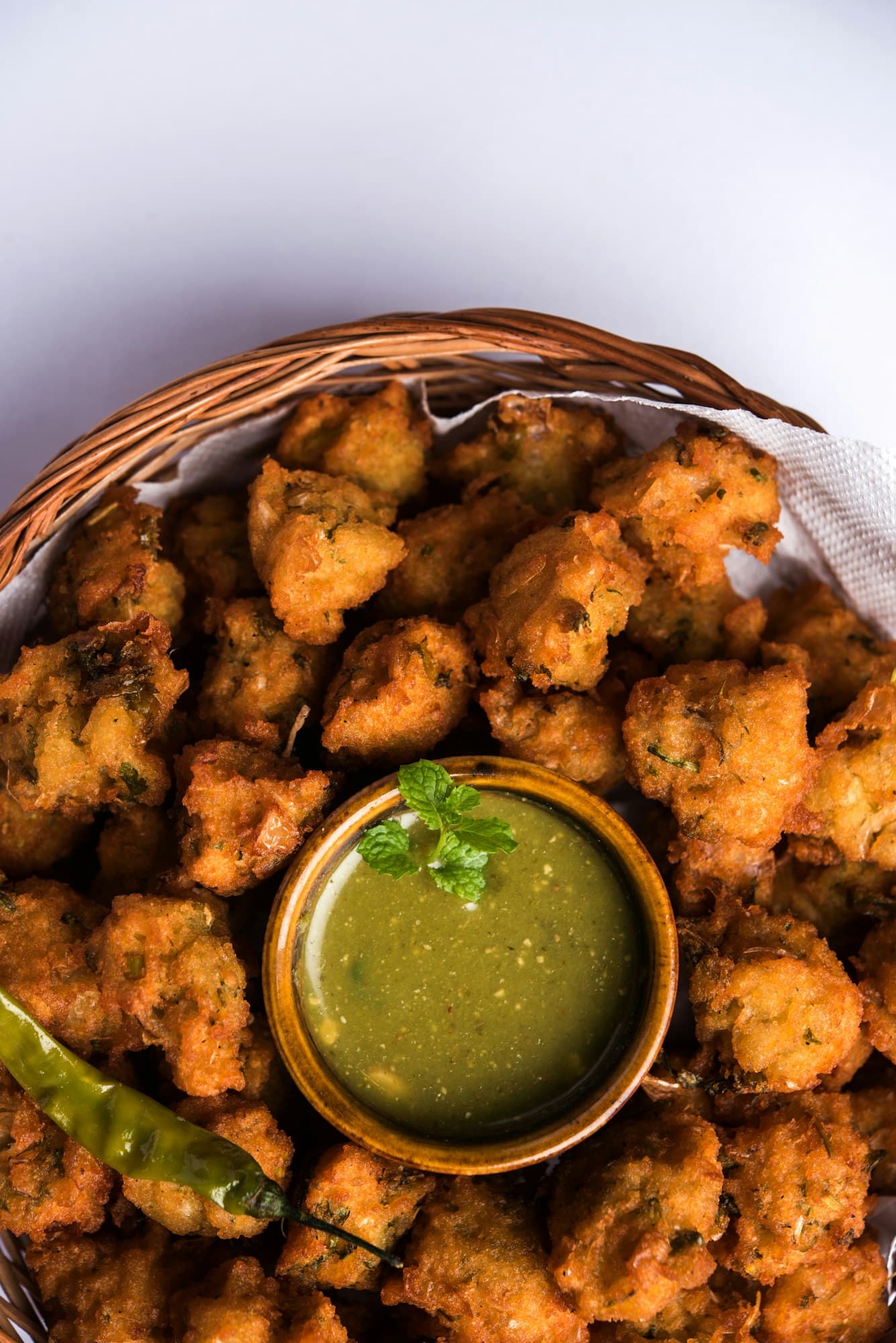What is the Secret to a Perfectly Crispy and Spicy Indian Pakora with Tamarind Chutney?

As you begin to explore the world of Indian cuisine, you’ll inevitably come across the humble pakora—a savory fried snack that’s as versatile as it is delicious. This post will unveil the secrets to crafting a perfectly crispy, spicy pakora with a tangy tamarind chutney, allowing you to replicate the tantalizing flavors of an Indian street food stall right in your own kitchen.
Crafting the Perfect Pakora Batter
The success of your pakoras hinges on the quality of the batter. An ideal batter should be light yet fluffy, rich in flavor yet not overpowering. The ingredients are simple: flour, a pinch of baking powder, some water, and a selection of spices.
Also to read : How Can You Make an Authentic Mexican Carnitas with a Perfect Crisp?
To begin with, you will need to sift around 1 cup of gram (chickpea) flour into a large mixing bowl. Gram flour, or besan, is a staple in Indian cooking, prized for its nutty flavor and power to crisp up beautifully when fried. Add 1/2 a teaspoon of baking powder to the flour. While not traditional, this small addition will give your pakoras a lighter, more aerated texture.
Next, it’s time to introduce some flavor to your batter. A teaspoon each of ground turmeric, red chili powder, and ground coriander seeds will add warmth and depth to your pakoras. Remember, these are spicy snacks, so don’t be afraid of going bold with your spices.
This might interest you : How to Craft a Gourmet Vegan Chocolate Avocado Pudding with a Coconut Whipped Cream?
Finally, gradually add water to your dry ingredients. You’re aiming for a thick, pancake-like consistency—too runny, and your batter won’t stick to your vegetables; too thick, and your pakoras will turn out doughy rather than crispy.
The Art of Frying Pakoras
Once your batter is ready, it’s time to heat your oil and start frying. The choice of oil is important here. Vegetable oil, with its high smoke point and neutral flavor, is a popular choice. You’ll want enough oil to fully immerse your pakoras, so don’t skimp.
Prepare an assortment of vegetables to coat in your batter. Traditional pakora choices include sliced potato, onion, and spinach, but feel free to experiment.
When your oil is hot enough (a small drop of batter should sizzle and float to the top), dip your vegetables in the batter and carefully add them to the oil. Fry until golden brown, then remove with a slotted spoon and drain on kitchen paper.
Crafting the Tamarind Chutney
The perfect complement to a hot, crispy pakora is a tangy tamarind chutney. The flavor of tamarind is uniquely sweet and sour, providing a mouth-watering contrast to the spicy pakoras.
Start by soaking a block of tamarind in hot water for about 20 minutes. Once it’s soft, strain the mixture and reserve the tamarind water, discarding the solids.
In a pan, heat a splash of oil and add a teaspoon of mustard seeds. When they start to pop, add the tamarind water, along with a half cup of jaggery or brown sugar, and a teaspoon of chaat masala. Simmer until you achieve a thick, syrup-like consistency.
Assembling and Serving your Pakoras and Chutney
After mastering the art of frying pakoras and crafting your tamarind chutney, it’s time to serve. Arrange your hot, crispy pakoras on a platter, with a bowl of your tangy chutney on the side.
For an authentic Indian street food experience, sprinkle your pakoras with a little chaat masala before serving. This ubiquitous spice blend, featuring tangy dried mango powder and earthy black rock salt, will add an extra layer of flavor to your dish.
While pakoras are traditionally served as a snack or appetizer, they also make a satisfying main course when paired with a few sides. A simple dal, some basmati rice, and perhaps a cooling raita (yogurt sauce) would turn your pakora and chutney into a full meal.
Final Thoughts
There you have it—a comprehensive guide to creating perfectly crispy, spicy pakoras with a tangy tamarind chutney. With a little practice and patience, you’ll master these techniques and transform your kitchen into an Indian street food stall. Remember, the key is in the batter and the oil temperature. Get these right, and you’re on your way to a truly tantalizing treat.
Adapting Pakora Recipes to Dietary Needs and Preferences
Creating a perfect pakora recipe doesn’t mean you can’t tweak it to suit your dietary needs or preferences. For instance, for a gluten-free version of pakoras, you can use rice flour instead of gram flour. This will give your pakoras a unique crunch and flavor.
If you’re looking to cut down on oil, why not try an air fryer? While traditional pakoras are deep fried, air frying offers a healthier alternative without compromising too much on the crispiness. The method is similar – coat your veggies in the batter and place them in the air fryer instead of hot oil. The time will vary depending on your air fryer, but generally, it takes 15-20 minutes to achieve a crispy consistency.
For a twist on the traditional pakora, you can also try making a pakora chaat. This involves layering your crispy pakoras with yogurt, green chutney, imli (tamarind) chutney, and a sprinkling of chaat masala. This gives the pakoras a whole new dimension of taste and texture – a bit of the traditional with a touch of the modern.
Pairing Pakoras with Other Dishes
Pakoras are versatile and can be paired with an array of dishes to create a more substantial meal. You can serve your pakoras alongside a bowl of fragrant basmati rice and a savory dal. Or, pair your pakoras with a cooling raita, a yogurt-based dip typically mixed with diced cucumbers and mild spices. The coolness of the raita works wonders in balancing the spiciness of the pakoras.
If you’re in the mood for a heartier meal, try creating a pakora sandwich. This involves placing your crispy pakoras between slices of bread, along with a generous spread of green and tamarind chutney. This gives you a flavorful and filling meal that’s perfect for lunch or dinner.
Conclusion
In conclusion, the secret to a perfect pakora lies in the quality of the batter, the right choice of spices, and the careful control of oil temperature. However, this Indian classic is open to modifications. Whether you want to go gluten-free, cut down on deep-frying, or experiment with a pakora chaat, there are endless ways to enjoy this dish. With a tantalizing tamarind chutney by its side, a well-made pakora can be a snack, an appetizer, or even a main dish. It is as versatile as it is delicious, and with this guide, you can master the art of making pakoras at home. So why not roll up your sleeves, start mixing that batter, and get ready to enjoy some hot, crispy pakoras. The world of Indian street food is at your fingertips. Happy cooking!
